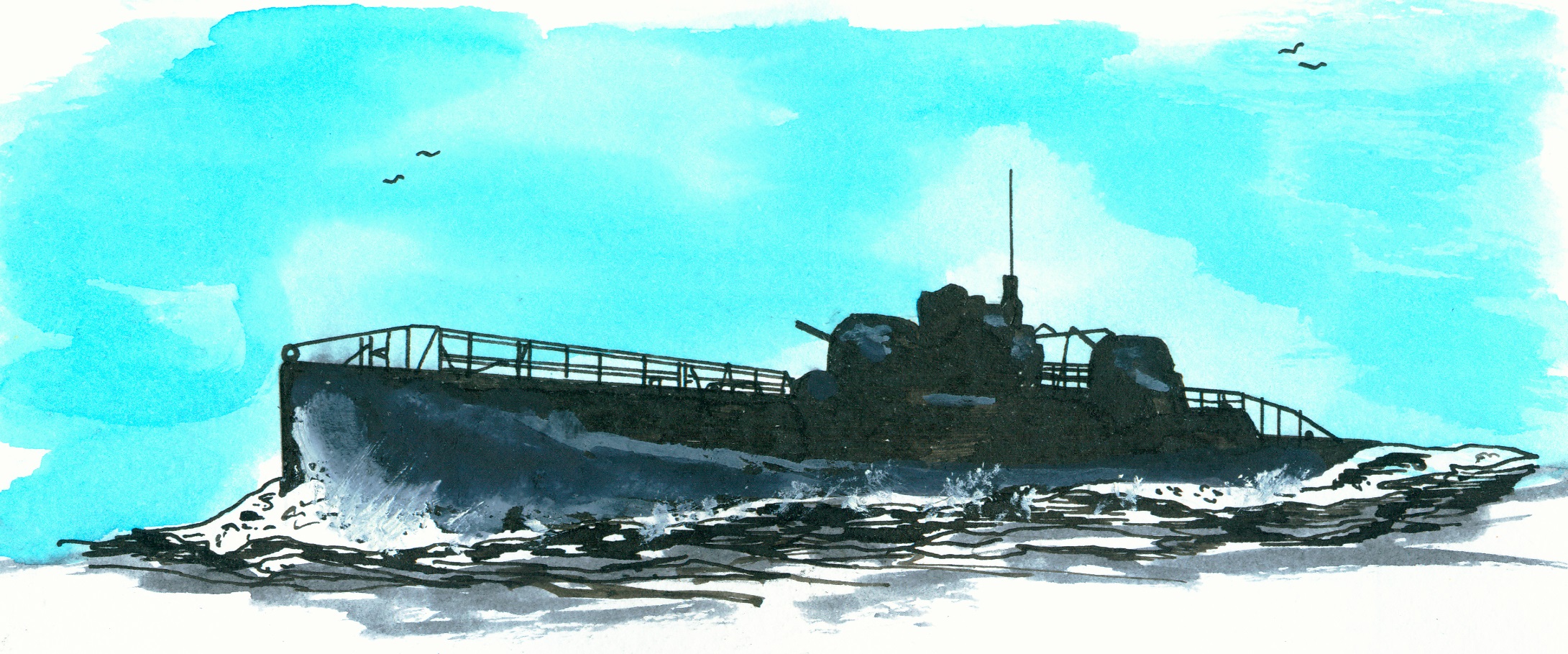Drawing Ron van Maanen
She was at one moment world’s largest submarine. In 1915 designed the Royal British navy a submarine cruiser or in other worlds a submersible merchant raider. For the next years was nothing done with this idea until the designs of the German U-173 calls submarines came available. She was laid down at the Chatham Dockyard, England on 2 November 1921, launched 16 November 1923, commissioned in 1925, accepted by the Navy in April 1926, in reserve after 1930 and decommissioned in 1936 and in the same year broken up at Pembroke, England on 12 December. Her main purpose being a submarine cruiser to be used against merchant shipping became obsolete as a result of the Washington Navy Treaty of 1922 which such use forbade. The submarine was in fact a failure and with continuous engines problems spent the most time of her career at dockyards while being repaired.
With a displacement of 2.780 long tons/2.820 tons (surfaced)-3.600 long tons/3.700 (submerged) tons were her dimensions 110,70 x 9,07 x 4,6 metres or 363’6” x 29’9”x 15’. Fitted out with 2-8 cylinder Admiralty Diesel engines supplying 2.200 kW, 2-MAN Diesel engines supplying 890 kW and 2 GEC electric motors supplying totally 1.500 kW was her speed 9 (submerged)-19,5 (surfaced) resulting in a range of 12.400 nautical miles at 12 knots submerged pr 50 nautical miles with a speed of 4 knots while submerged. During tests she dived to depth of 110 metres or 360’. Her crew numbered 110 men. She was heavily armed, namely 2x7,7mm machine guns, 2x2-5.2” guns and 6-21” torpedo tubes. Due to lacking enough space in the narrow torpedo room it lasted 24 minutes to reload all torpedo tubes. The gun turrets were not protected by armour and placed before and after the conning tower.
Note
1. The Washington Naval Treaty was signed by the United States, United Kingdom, Japan, Italy and France on 6 February 1922 as a result of the Washington Naval Conference of November 1921-February 1922. The London Naval Treaty of 1930 modified the Washington treaty and was followed by the Second Naval treaty four years later. The Washington Naval Treaty was to limit the total tonnage of the total ships, a maximum tonnage of a battleship (no more as 35,560 tons) and a maximum calibre of 16” or 40,6cm guns. These Naval Treaties influenced the naval strengths and strategies of the countries which were involved in the Second World war seriously. Japan stated officially on 29 December 1934 not longer to accept the terms of the treaty which became effective in 1936.

